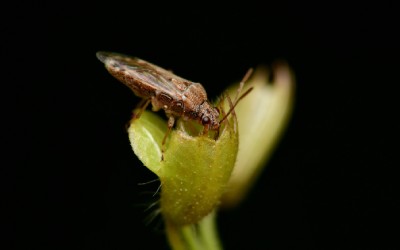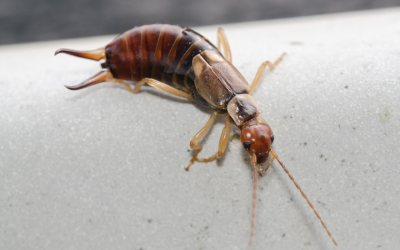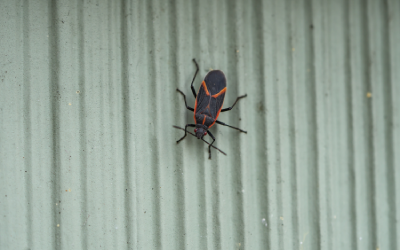Here at Russell’s Pest Control, one of the most common concerns we hear is something along the lines of, “I’m seeing a lot of centipedes in my basement. Should I be concerned?” This is certainly the time of year when you might see lots of little centipedes in your basement.
When the weather starts cooling down, the centipedes need to settle somewhere cool and moist. For this reason, they will sometimes enter man-made structures to protect themselves and wait out the winter. They’re commonly found in unfinished basements or crawl spaces.
They’re certainly hard to miss, but the real question is whether these arthropods are dangerous or not. The experts at Russell’s Pest Control are here to lay down the facts.
The Dangers of Centipedes
First and foremost, centipedes are not dangerous to humans. They stick to preying on their fellow bugs and are actually very afraid of people! There are still a few legitimate reasons that people might want them gone, but it’s important to remember that they are perfectly content to leave you alone as long as you do the same.
- Most people simply find centipedes pretty gross. For some people, the sight of them can instill an immediate sense of panic. If this is you, you should set up a pest control plan to have them dealt with.
- Centipedes can bite. It is quite rare, but they can do it. These pests are no more toxic to most humans than a house spider. It is possible to be allergic to their venom, which can cause discomfort, but you are unlikely to experience a severe allergic reaction.
- Keep calm: they won’t hurt you. Centipedes themselves pose very little threat to people, but their presence can be a sign of underlying issues. If centipedes are getting into your home, you may have some rot issues or plumbing leaks that need to be addressed. If you have a lot of centipedes, it may mean that you have another pest issue that’s keeping them well-fed.
Are Centipedes Poisonous?
In a word – no. Centipedes are not poisonous. They are venomous, however. Many people confuse the words “poisonous” and “venomous.” The difference is fairly simple; poisonous insects are harmful if ingested, and venomous insects are harmful if they bite you. (It’s still not a good idea to eat them, though.)
Centipedes’ venom usually doesn’t cause symptoms worse than itching. House centipedes, the most commonly found type of centipede in Knoxville, are venomous, but are not harmful to humans; they prey on small insects and will not bother you unless you bother them first. They like to keep their tiny centipede fangs to themselves.
Are Centipedes Beneficial Insects?
Despite their creepy appearance, even a small centipede can do a lot of good! They eat other bugs, including pests like moths and flies – even cockroaches! They also kill arachnids, so if you don’t like spiders, centipedes are your friend. But it is important to point out that centipedes are nowhere near as effective as direct pest control measures.
Why Are There Tiny Centipedes in My House?
Centipedes lay their eggs in late spring and early summer, which means they will be adults when they come to overwinter in your home. Even fully-grown, though, they’re still pretty small. House centipedes only grow to be about 1.5 inches in length – though they definitely make up for that with their 15 pairs of long legs.
If you see a lot of mini centipedes in your house, you may have disturbed a nest of babies! They may be gross, but they won’t hurt you.
Need to Get Rid of Centipedes?
Are you dealing with a basement full of centipedes? The pest experts here at Russell’s Pest Control can give you a hand with that problem and help you assess entry points that are allowing these pests to get in. Effective pest control isn’t just a quality of life upgrade, it is essential to protecting your home’s equity and your family’s health. Contact us today to get expert advice or to schedule an inspection.



